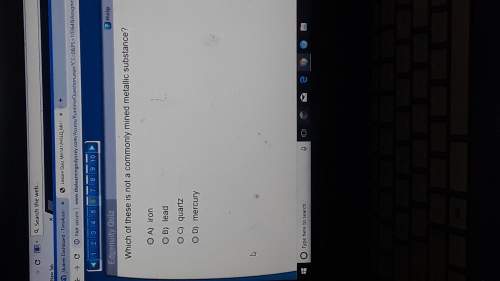
Chemistry, 09.12.2019 20:31 coolkid20034
The electroosmotic mobility of a solution in a particular capillary is 2.11 × 10 ^− 8 m^2 /(v. s) at ph 3 and 8.88 × 10 − 8 m 2 /(v ⋅ s) at ph 11. a 27.7 kv potential is applied across the 51.4 cm long capillary. how long will it take a neutral molecule to travel the 41.7 cm from the injector to the detector if the solution is buffered at ph3 and at ph11?

Answers: 1


Another question on Chemistry


Chemistry, 22.06.2019 02:30
98 ! and brainliest plz ! the below reaction can be categorized as more than one type of reaction. which reactions are these, and what are the types of reactions?
Answers: 1

Chemistry, 22.06.2019 03:00
Which of these would be caused by a chemical change? a) the formation of lava. b) sedimantary rock layering over time. c) metamorphic rock forming from igneous. d) metamorphic rock eroding to form sedimentary rock.
Answers: 3

Chemistry, 22.06.2019 06:30
The following reaction shows the products when sulfuric acid and aluminum hydroxide react. al(oh)3 + h2so4 → al2(so4)3 + h2o the table shows the calculated amounts of reactants and products when the reaction was conducted in a laboratory. sulfuric acid aluminum hydroxide initial amount of reactant 40 g 15 g theoretical yield of water from reactant 14.69 g 10.38 g what is the approximate amount of the leftover reactant? 11.73 g of sulfuric acid 10.33 g of sulfuric acid 11.12 g of aluminum hydroxide 13.67 g of aluminum hydroxide
Answers: 3
You know the right answer?
The electroosmotic mobility of a solution in a particular capillary is 2.11 × 10 ^− 8 m^2 /(v. s) at...
Questions


Biology, 26.08.2021 23:20

Chemistry, 26.08.2021 23:20

Mathematics, 26.08.2021 23:20



Health, 26.08.2021 23:20

English, 26.08.2021 23:20



Mathematics, 26.08.2021 23:30

Biology, 26.08.2021 23:30

Business, 26.08.2021 23:30

Spanish, 26.08.2021 23:30

Mathematics, 26.08.2021 23:30




History, 26.08.2021 23:30




